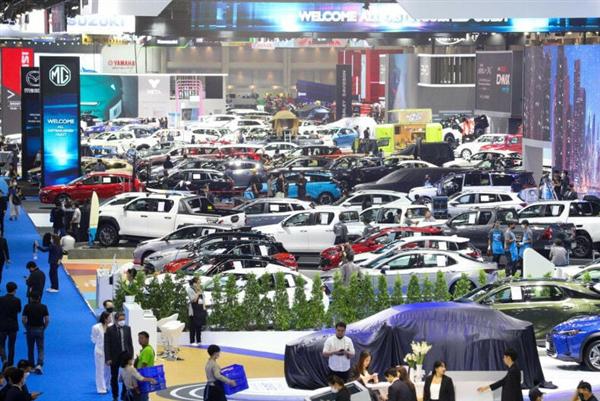Japan's Backyard Lost! Japanese Cars Suffer Dimensionality Reduction Attack by Chinese Automakers in Thailand
On August 13, according to Tencent Auto's "High Beam" report, Thailand has maintained an annual car consumption level of over one million units for many years, and was once the second largest automobile market in ASEAN.
Japanese cars, as the dominant players in the Southeast Asian automotive market, occupy more than 80% of the market in Thailand. However, since 2021, with Chinese car companies entering the Thai market one after another, Thailand, previously considered a stronghold for Japanese cars, has shown signs of losing its dominance.
According to reports, in the first phase of Thailand's subsidy policy "EV3.0" implemented in 2022, the excise tax on passenger BEVs was reduced from 8% to 2%. If the price is below 2 million baht (approximately 440,000 RMB), a subsidy of up to 70,000 to 150,000 baht (approximately 15,000 to 33,000 RMB) per vehicle is provided based on battery capacity, and import duties on vehicles are reduced, with a maximum reduction of 40%.
With reduced taxes and increased subsidies as essential requirements, Chinese car manufacturers must establish local factories in Thailand.
To seize the policy window, seven automakers including SAIC MG, Great Wall, BYD, Neta, GAC, Changan, and Chery have all established factories in Thailand, with a combined planned capacity exceeding 550,000 vehicles per year. In addition, Zeekr, Geely Radar, XPeng, Leapmotor, and IM Motors are also entering the market through complete vehicle exports.
For a time, Thailand became the second major battleground overseas for Chinese car companies, and since domestic Chinese cars have already undergone fierce competition at home, the automakers that remain in the game now generally have no significant shortcomings in terms of price, configuration, and overall product strength.
In contrast, due to insufficient competition among Japanese brands, car prices are high and the models are relatively outdated.
Wang Haoyong, General Manager of GAC Thailand, believes that compared to Chinese new energy vehicles, Japanese brand cars are "one generation, or even two generations behind" in terms of products.
He cited the Bangkok Auto Show in recent years as an example, stating that local consumers rarely take the initiative to look at Japanese fuel vehicles because they hardly ever get updated. Instead, people are more willing to check out Chinese brand cars, which can comprehensively outperform in terms of exterior design, features, materials, space, and performance.

At the Bangkok International Motor Show at the end of March 2025, the number of pre-orders for Chinese car brands exceeded half of the total pre-orders at the exhibition for the first time, accounting for 56%, while Japanese car makers dropped to 38%.
The overwhelming product strength and price war stimulation have helped Chinese car companies successfully surpass American ones, securing the second position. In the Thai market, their market share increased from 5% in 2022 to 12.1% in 2024, while Japanese car companies saw a decline from 85.6% to 76.5% during the same period.
This trend continues to gradually increase. In April 2025, Thailand's new car sales reached 47,193 units, a year-on-year growth of 1%. Toyota firmly holds first place with a 38% market share, but the overall market share of Japanese cars has dropped to 65%.
In comparison, Chinese automakers represented by brands such as BYD, SAIC MG, and Changan Automobile have already achieved a market share of over 24% in the Thai market.

【Copyright and Disclaimer】The above information is collected and organized by PlastMatch. The copyright belongs to the original author. This article is reprinted for the purpose of providing more information, and it does not imply that PlastMatch endorses the views expressed in the article or guarantees its accuracy. If there are any errors in the source attribution or if your legitimate rights have been infringed, please contact us, and we will promptly correct or remove the content. If other media, websites, or individuals use the aforementioned content, they must clearly indicate the original source and origin of the work and assume legal responsibility on their own.
Most Popular
-

EVA Morning Prices on September 12: Most of the Market Holds Steady, Highest Rise of 50 Yuan
-

[PET Weekly Outlook] Polyester Bottle Chips Expected to Oscillate and Warm Up with Costs Today
-

List Released! Mexico Announces 50% Tariff On 1,371 China Product Categories
-

EU Changes ELV Regulation Again: Recycled Plastic Content Dispute and Exclusion of Bio-Based Plastics
-

Case Study | Clariant AddWorks™ Additives Solve Plastic Yellowing Problem






